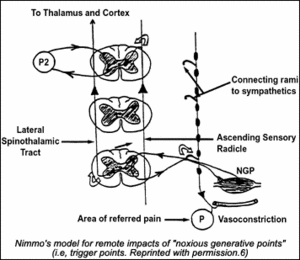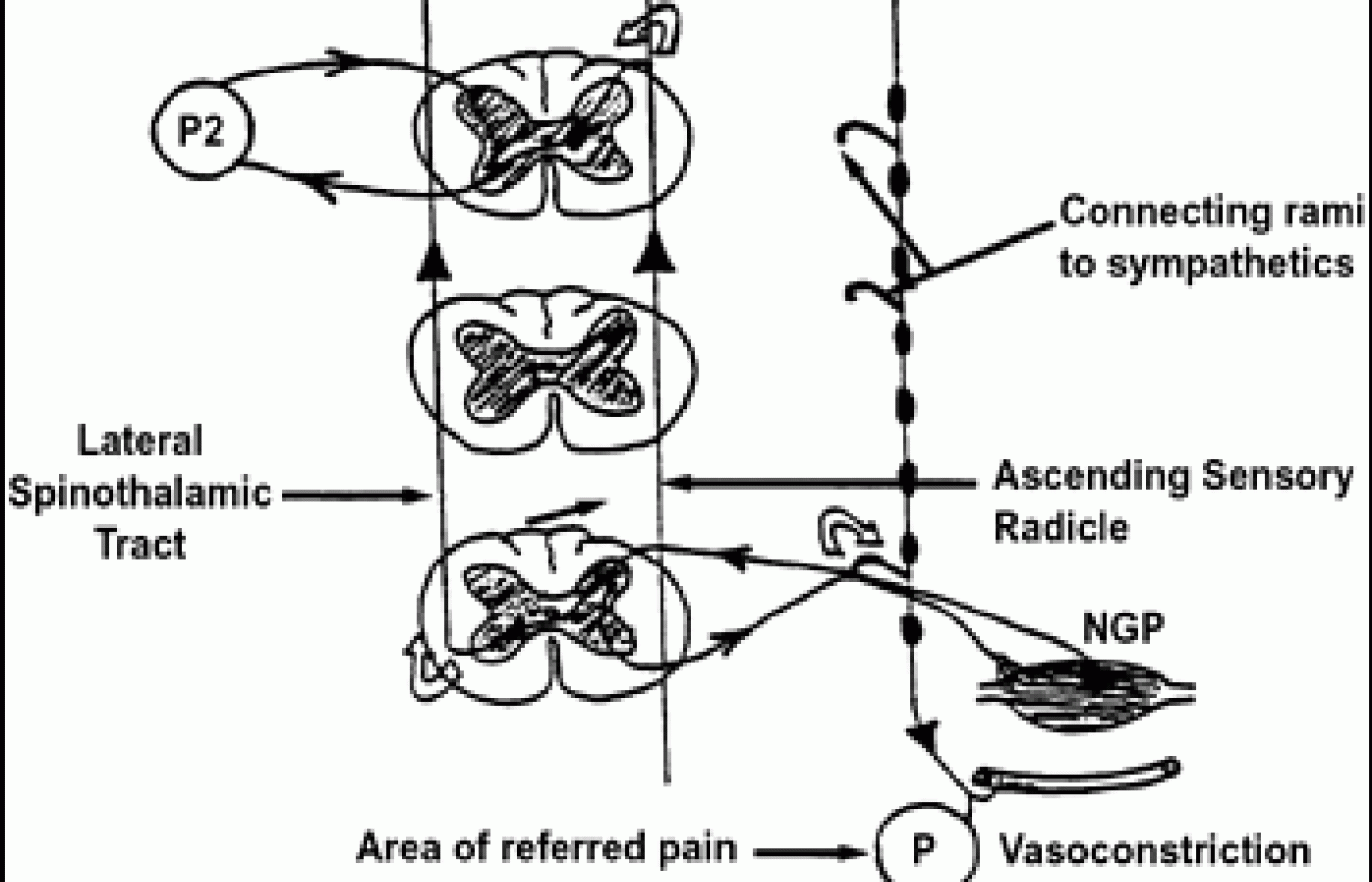New York's highest court of appeals has held that no-fault insurers cannot deny no-fault benefits where they unilaterally determine that a provider has committed misconduct based upon alleged fraudulent conduct. The Court held that this authority belongs solely to state regulators, specifically New York's Board of Regents, which oversees professional licensing and discipline. This follows a similar recent ruling in Florida reported in this publication.
Twenty-Nine Years Ago in Chiropractic
In the beginning, there was no JMPT, no other peer-reviewed chiropractic journal, and none of the other journals that now publish the work of chiropractors. In the beginning, many chiropractors who engaged in scholarly activity published their work in the Digest of Chiropractic Economics, which I regard as the JMPT equivalent of its time. (Granted, it was not peer-reviewed.) This publication still exists, but does not have the look and feel of years past, when it included many technique and research articles.
A "blinded" reviewer recently chastised me for having cited, in an article submitted for publication, references not indexed in Medline. Personally, I do not believe it necessary to cite only peer-reviewed references. I think it is the responsibility of the reader to consider not only the evidence presented to him or her in a research publication, but also the credibility of the journal - be it a professional or less ambitious trade journal - in which it is presented. I often browse old issues of the Digest, Today's Chiropractic, etc., reading articles that today might be submitted to more prestigious journals, often written by authors who are still actively engaged in scholarly activity, and whose names remain well-known today.
Recently, while browsing through the Digest of Chiropractic Economics of November/December 1973, I came across a short article, author unknown, published under the title "New Technique." It declared: "Two medical doctors have discovered a sensational new medical technique which, they say, can cure a variety of illnesses ranging from migraine headaches to paralysis."1
I rarely read contemporary articles that begin that way, but for the sake of chiropractic archeology, I mustered the intellectual strength to continue reading. The article went on to describe the work of the brothers Huneke, Ferdinand and Walter, Germans who had discovered, quite accidentally, that injecting old scars with novocaine could cure chronic problems, such as migraine headaches, in what would appear to be unrelated, distant parts of the body. They coined the term "neural therapy" to describe their method of treating "neural tracks," that in some way run from one part of the body to another.
Intrigued, I "googled" (www.google.com) my way to the Hunekes2,3 and found their work, dating all the way back to 1925. In that year, Ferdinand Huneke accidentally administered procaine to his sister, who suffered from migraine. One further deliberate treatment cured her of this chronic problem. With the assistance of his brother Walter, he developed methods of using procaine not only as a local anesthetic, but also for therapeutic purposes. In 1927, the Hunekes published Unbekannte Fernwirkungen der Lokalanþsthesie ("Remote Effects of Local Anesthetics"). Although their procedure originally was called "therapeutic anesthesia," they later changed this to "segmental therapy," and finally to "neural therapy."
The big breakthrough occurred in 1940, when Ferdinand Huneke observed what he would later call the "lightning reaction." He saw a woman for a mechanical shoulder problem, who had already had her tonsils, most of her teeth, and her appendix removed by quacks who believed her shoulder problem was vaguely related to bloodborne toxins and the immune system. Just prior to giving up her right leg, scheduled for amputation because it had been the site of osteomyelitis 35 years earlier, the woman sought treatment from Huneke, who injected her shoulder with novocaine. Unfortunately, he failed to affect a cure, and the patient was discharged. However, a few weeks later, the patient returned to the clinic, because her leg scar had turned bright red and become itchy and obviously inflamed. This time, reasoning that her left shoulder problem was somehow related to the scar on her right leg, he injected novocaine into the itching scar. All shoulder pain on the opposite side of her body instantly disappeared - hence the term, "lightning reaction" - and the arm could be moved without pain. Huneke reasoned that local areas of pathogenic irritation trigger and maintain remote symptoms by means of neural pathways. This treatment approach became known as neural therapy.
"Googlizing" neural therapy provided the following definition, from Dr. Diedrich Klinghardt (1991):
"Neural therapy is a healing technique for attempting to deal with chronic pain and other longstanding illnesses and conditions. It involves injecting local anesthetics into autonomic ganglia (nerve cell bodies); peripheral nerves; scars; glands; acupuncture points; trigger points (points that produce a sharp pain when pressed), and other tissues and anatomical sites."4

Although neural therapy appears largely unknown in the U.S., it is widely used in German-speaking countries and South America for the treatment of chronic pain. It is believed to act through normalizing the function of the nervous system. The first step in neural therapy is to identify the focus, or primary lesion thought to account for the remote pathology. It initially involved injecting anesthetics into nerve sites (e.g., autonomic ganglia, peripheral nerves), acupuncture points, glands, scars and other tissues to relieve remote pain. Since then, noninjection techniques have also been developed, including the administration of electrical currents, laser, and other light devices. According to contemporary neural therapist and teacher Dr. Klinghardt, "a scar injection (or injection to a tooth, ganglion or other dysfunctional structure) can stop abnormal neurological signals (from a scar, tooth or other dysfunctional group of cells). Abnormal signals stemming from an often remote, untreated focal area are often the cause of [anatomic nervous system] ANS dysfunction in the brain, leading to areas of vasoconstriction [and other problems]."5
Returning to the short article in the Digest of Chiropractic Economics,1 the unidentified author went on to compare neural therapy, this "sensational new medical technique," with the "celebrated Chinese theory of acupuncture." No comparisons were drawn to anything chiropractic, despite the similarity of the precepts of neural therapy to chiropractic theories that also were quite current in 1973: for example, the writings of Raymond Nimmo and James Vannerson, architects of the Receptor-Tonus technique.
While composing a chapter on Receptor-Tonus technique for my forthcoming text (with co-author Brian Gleberzon) on chiropractic technique systems, I read through most of the Nimmo-Vannerson anthology edited and published by Schneider, Cohen, and Laws.6 This book found its way onto my desk thanks to its donation to the Palmer West library by Dr. Terry Yochum (whom I acknowledge, in addition to the anthology editors, for making these writings finally accessible). Dr. Raymond L. Nimmo was brilliant, heretical and most courageous. He introduced what is now called "trigger point" work into chiropractic at a time when trigger point work was not "cool."
Although it would take an entire article to express my surprise and wonder at reading Nimmo's writings, I cannot address the serendipitous discovery of neural therapy without pointing out his prior contributions. In the late 1940s, he discovered what he initially coined the "noxious generative point," before switching later to Dr. Janet Travell's more widely known term, trigger point (equivalent, perhaps identical, to the "focus" of neural therapy).
The starting point of Receptor-Tonus technique is that dysfunctional muscle results in joint restriction and/or misalignment, and abnormal visceral function. These problems often are self-perpetuating, and require external intervention to disrupt the reflex arcs. Receptor-Tonus technique identifies and treats these myofascial trigger points, so as to normalize neurological function, and reduce or eliminate both direct and referred pain. Normalizing receptor function also normalizes effector regulation of muscle and gland function, freeing a muscle or group of muscles from hypertonus, and improving the patient's posture and overall bodily function.
In Nimmo's view, the initiating insult to a muscle - such as overuse or frank injury, a cold draft, or even emotional problems - causes an abnormal increase in afferent input to the spinal cord. In turn, this may cause an abnormal stream of efferent impulses back to the muscle, resulting in hypermyotonia (hypertonus), a vicious cycle sometimes called the pain-spasm-pain cycle. These abnormal reflex arcs have tremendous staying power, and often require external intervention to break the loop. In addition to the reflex hypertonus of the muscle related to the trigger points, there may be production of satellite or secondary trigger points, and visceral dysfunction in the organs innervated by the internuncial neuronal pool stimulated by the trigger point.
Chiropractors have always had to struggle with the concept that wildly different techniques, ranging from methods that emphasized the atlas, sacrum or any bone in between, to those that used light or vigorous thrusting, seemed to get parallel results. Nimmo seemed to deal more squarely with this paradox than any other chiropractor whose work I read in writing my book. He pointed out that although we usually blame misaligned vertebra for patients' problems, pretreatment and posttreatment X-rays do not usually differ, even as patients improve. He cited the case of the upper cervical practitioner, who asserts that there can be no impingement below the neck, despite the fact that many patients whose necks are never touched are restored to health. He also cited the case of the pelvic man opining that the foundation of the spine must be addressed first, but then left with no explanation for the success of the upper cervical practitioners.
Nimmo believed the success of varying treatment methods ultimately accrued, however unintentionally, to their having had an impact upon receptor tonus points. Despite the reflex-like character of his work (in the sense that manual stimulation of various body loci produces or reduces pain in body locations that can be quite far away), Nimmo himself vigorously opposed the notion that his was a reflex technique. "It is not a reflex system, but a direct approach, clearing out entirely all so-called 'reflexes.'"6
I hope no one reading this article will come away thinking I in some way endorse neural therapy or injection techniques. On the contrary, I am delighted to possess more conservative traditional chiropractic methods in my armamentarium that may be more conceptually and procedurally developed. Although I am not tempted to take up neural therapy in some way, which is situated even more on the fringes of health care than chiropractic, I am always intrigued to find our methods given more credence by parallel and consistent discoveries in allied health fields.
References
- New technique. Digest of Chiropractic Economics November/December 1973;4(5).
- Beck A. Neural therapy according to Huneke. Activation of the body's self-healing powers. www.neuraltherapieschweiz.org/eng/therapy1.html.
- Biological terrain. www.bioter rain.co.uk/BioTerrain/biopuncture.html.
- Neural therapy. www.whale.to/w/neural.html.
- Klinghardt D. Neural therapy and the brain. www.neuraltherapy.com/a_neural_therapy_brain.asp.
- Nimmo RL, Vannerson JF. The Collected Writings of Nimmo & Vannerson: Pioneers of Chiropractic Trigger Point Therapy, 2001.
Robert Cooperstein, DC
San Jose, California
Dr. Robert Cooperstein, a professor at Palmer College of Chiropractic West, can be reached at www.chiroaccess.com, or by e-mail at drrcoop@aol.com.



